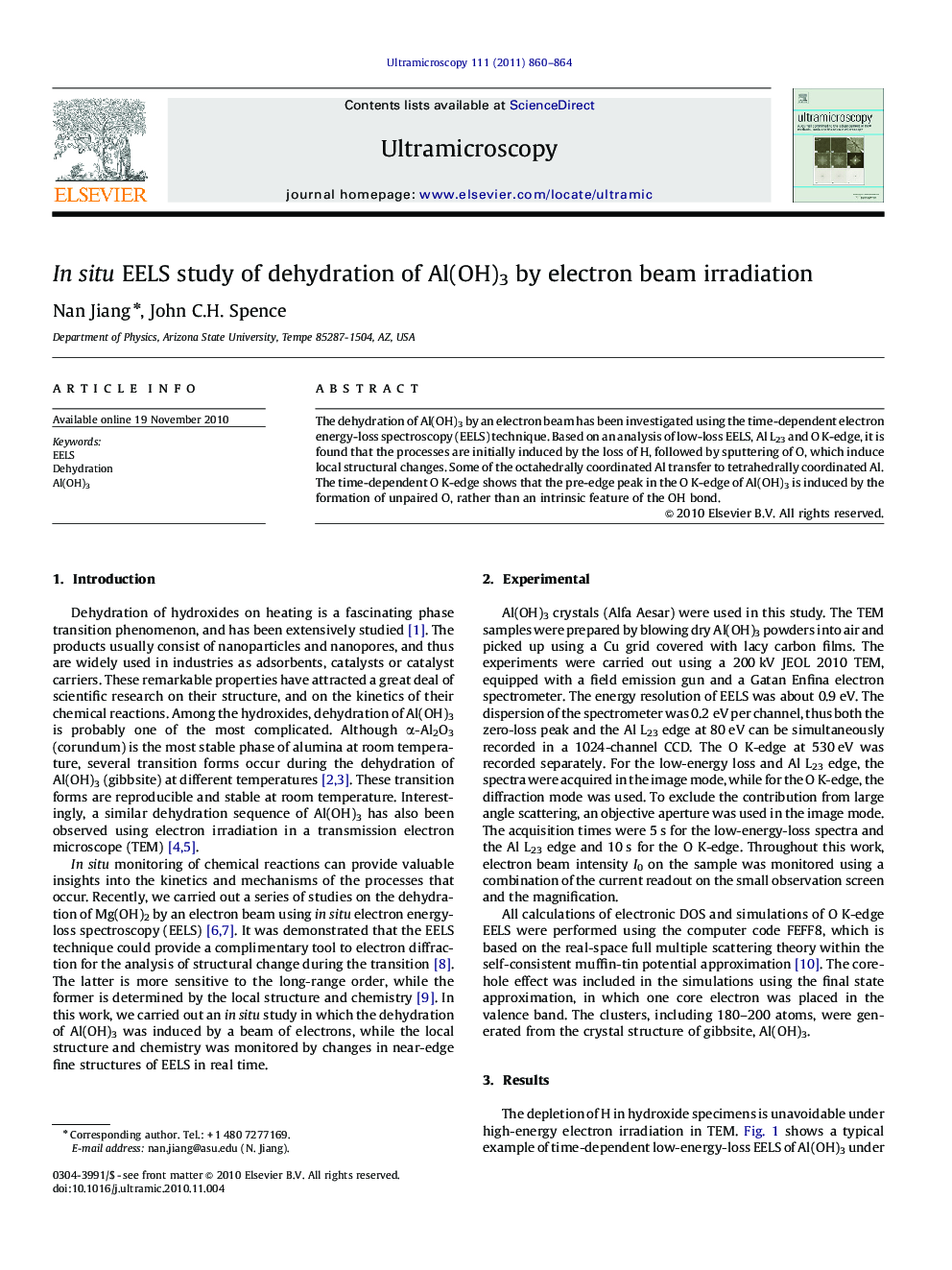| Article ID | Journal | Published Year | Pages | File Type |
|---|---|---|---|---|
| 1677882 | Ultramicroscopy | 2011 | 5 Pages |
The dehydration of Al(OH)3 by an electron beam has been investigated using the time-dependent electron energy-loss spectroscopy (EELS) technique. Based on an analysis of low-loss EELS, Al L23 and O K-edge, it is found that the processes are initially induced by the loss of H, followed by sputtering of O, which induce local structural changes. Some of the octahedrally coordinated Al transfer to tetrahedrally coordinated Al. The time-dependent O K-edge shows that the pre-edge peak in the O K-edge of Al(OH)3 is induced by the formation of unpaired O, rather than an intrinsic feature of the OH bond.
Research Highlights►Al(OH)3 dehydrates under high-energy electron beam irradiation. ►The dehydration process by electron irradiation is different from the process by the thermal methods. ►H and O are directly removed from the sample by high-energy electrons without forming H2O.
